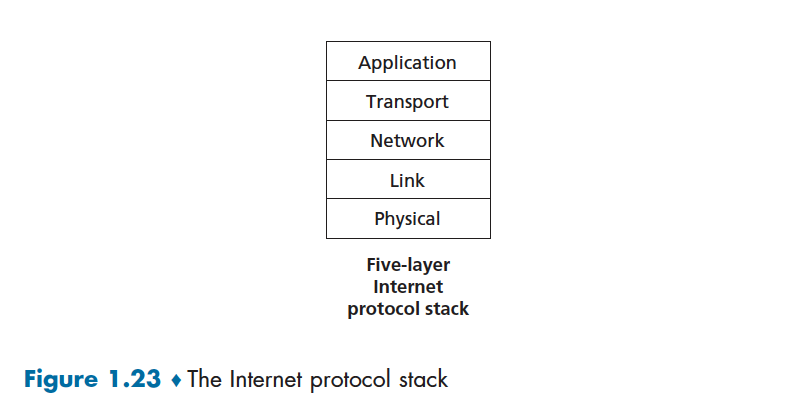Internet Protocol Stack (TCP/IP model)
This is the meat and butter to understanding how the Internet works.

Older Models of TCP/IP Model
Older models often show only four layers, combining the link and physical layers into the network access layer.
The 5 layers:
- Application Layer: support network applications
- HTTP, IMAP, SMTP, DNS
- Transport layer: process
- TCP and UDP
- Network layer
- IP, routing protocols
- Link layer: data transfer between neighbouring network elements
- Ethernet: 802.11
- physical layer
- Bits on the wire
Application Layer
The application layer is where network applications and their application-layer protocols reside. The Internet’s application layer includes many protocols:
Transport Layer
The Internet’s transport layer transports application-layer messages between application endpoints. In the Internet, there are two transport protocols to choose from:
Either of these can transport application-layer messages.
This feels like data link layer?
No, transport layer is for sending messages across different networks. At the datalink layer it is always two physically adjacent systems communicating.
Network Layer
The Internet’s network layer is responsible for moving network-layer packets known as datagrams from one host to another.
This is routing.
Data Link Layer
The Data Link Layer is responsible for node-to-node communication on the same network.
Job is to encapsulate data into frames.
- Think about your CAN data link layer, it defines how a frame is defined
Handles the physical addressing of frames on the network and ensures that data can be transmitted reliably
Still a little confused...
I get that data link works on the same network.
Both Data Link and transport layer ensure that the data is transported safely and correctly, and they both do CRC. So I don’t really see the difference.
- But like Ethernet is both a data link layer and a physical layer
Some data link layer examples
Physical Layer
The job of the physical layer is to move the individual bits within the frame from one node to the next. This is where we’re working at voltage level.